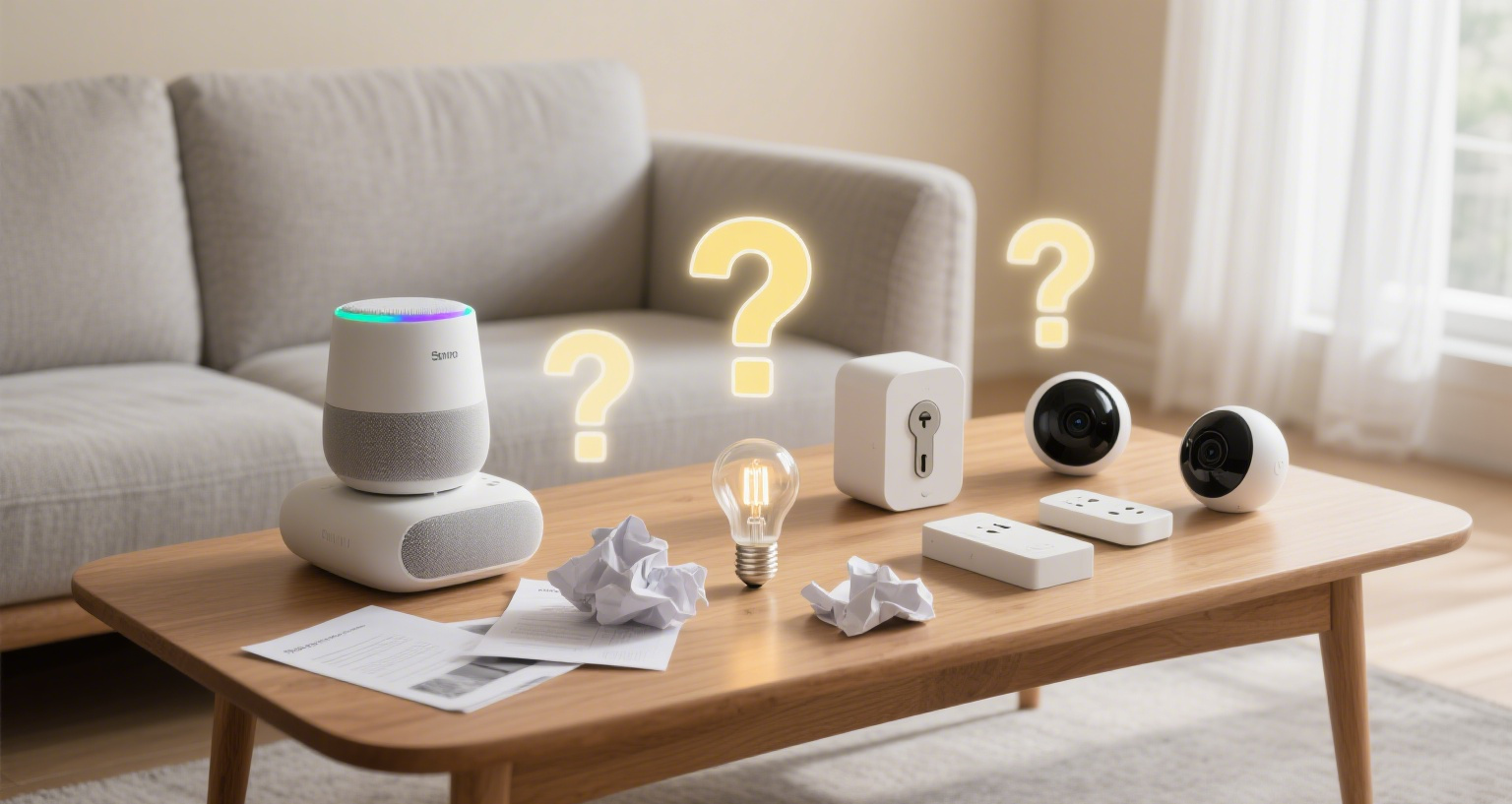Introduction
In the booming smart home market, 90% of consumers express regret after purchases—overpaying for redundant features, trapped in ecosystem fragmentation, or ignoring long-term costs. This collective remorse stems from three psychological traps: feature worship, short-sighted decisions, and detached scenarios. This guide dissects these pitfalls and offers actionable solutions.
1. Core Psychological Traps
1.1 Redundancy Trap
- Manufactured “Needs”:
- Smart fridges with screens (11% usage rate) cost $280+ extra but offer little beyond basic cooling.
- Voice-controlled washers suffer 40% false triggers due to kitchen noise; manual control remains more efficient.
- Cost-Benefit Rule: Avoid single features with >30% price premium (e.g., touchscreen fridge doors).
1.2 Ecosystem Lock-in Trap
- Brand Silos: Mixed-brand setups force 4.7 daily app switches (vs. 1.5 for single ecosystems).
- Example: Bridging Xiaomi AC with Huawei speakers causes 2-second delays.
- Compatibility Blindspots: 45% buyers overlook protocol compatibility, leaving devices isolated.
1.3 Emotional Decision Trap
- Tech Hype: Young buyers overpay for “cutting-edge” features (e.g., gesture-controlled TVs), but 72% go unused within six months.
- Herd Mentality: 31% admit impulse-buying useless gadgets (e.g., smart mirrors) due to influencer hype.
2. Who Regrets Most? Consumer Profiles
Table: Regret Patterns
| Profile | Regret Purchase | Root Cause |
|---|---|---|
| Urban professionals (25-35) | Camera-equipped smart locks | 15% daily battery drain + privacy fears |
| Tech enthusiasts | Robotic-arm vacuums | Redundant for low-clutter homes (save $250 with basic models) |
| Affluent families | Whole-house control panels | 72% still use phones/voice commands |
Psychological Drivers
- Security Illusion: Ignoring local storage for cloud-reliant cameras (68% of privacy complaints).
- Overconfidence: Seniors abandon voice assistants due to <50% dialect recognition accuracy.
3. How Brands Manipulate Buyers
3.1 Cognitive Anchoring
- Pricing Games: 599 robot vacuums “discounted” to 399 (actual cost: $280) trick buyers.
- Feature Bundling: Core functions (e.g., AC cooling) bundled with gimmicks (e.g., weather displays) to inflate prices.
3.2 Scenario Hypnosis
- Idealized Ads: Show coffee makers + toasters syncing seamlessly, hiding real-world complexity.
- Fear Marketing: Highlighting “traditional lock break-ins” to push overpriced smart locks.
3.3 Social Engineering
- Status Symbolism: Framing smart homes as “middle-class essentials” to trigger insecurity.
- Fake Reviews: Inflated ratings hide flaws (e.g., 30% overstated battery life).
4. Anti-Manipulation Strategies
4.1 Demand Filtering
- Tiered Needs:
- Essentials: Security, lighting, climate control.
- Upgrades: Auto-cleaning, voice control (only if ≤20% price premium).
- Case: Skip a 650 smart fridge; choose a 370 basic model + $30 smart tags (track food expiry).
4.2 Ecosystem Defense
- Prioritize Matter Protocol: Ensures cross-brand compatibility (Apple/Google/Xiaomi).
- Bridge Solutions: Use IR/RF converters ($15) to integrate old devices.
4.3 Decision Delaying
- 72-Hour Rule: Waiting 3 days after adding to cart cuts impulse buys by 67%.
- In-Store Testing: 35% abandon purchases after experiencing laggy interfaces firsthand.
5. Future Trends: Lowering Regret Rates
- Regulatory Shift: China’s 2026 labeling rules will mandate feature usage rates (e.g., “Voice control used 0.3 times daily”).
- AI Assistants: Apps scan products to warn: “93% stopped using this feature within 6 months.”
- Subscription Models: Hardware-as-a-service (e.g., $5/month security bundles) reduces upfront risks.
Conclusion: Human-Centric Choices Over Hype
To eliminate buyer’s remorse:
- Reject Spec Worship: Night-vision clarity > 8K camera resolution.
- Test Real Scenarios: Demo products before believing ads.
- Embrace Imperfection: Accept tech limits to avoid “perfect system” fantasies.
Final Formula: Real Needs × Open Protocols × Delayed Decisions = Zero Regrets
Become the master—not the victim—of technology.
